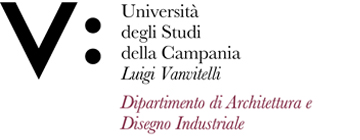Francesca CASTANO'
Insegnamento di STORIA DEL DESIGN E DELL'ARCHITETTURA 1
Corso di laurea in DESIGN E COMUNICAZIONE
SSD: ICAR/18
CFU: 6,00
ORE PER UNITÀ DIDATTICA: 48,00
Periodo di Erogazione: Primo Quadrimestre
Italiano
| Lingua di insegnamento | italiana |
| Contenuti | L’insegnamento illustra i principali temi della storia del design e dell’architettura in Occidente dall’età antica al Novecento, in relazione ai contesti sociali e culturali. |
| Testi di riferimento | Parte istituzionale |
| Obiettivi formativi | Obiettivo primario del corso è quello di definire i fondamenti della storia del design in una confluenza cruciale tra arte, mondo dell’industria, sapienze artigianali e spazio del progetto. Fondamentale è in questa direzione la ricognizione storica fino all’attualità dei momenti significanti in cui la cultura del design si misura con le ricerche condotte in campo progettuale in relazione ai cambiamenti sociali, alle tendenze culturali, alle mode e alle sperimentazioni scientifiche, che consentirà allo studente di acquisire una adeguata capacità storico-critica nella lettura dei fenomeni portanti della cultura del design e di spaziare con maggiore consapevolezza negli ambiti della riflessione teorica. |
| Prerequisiti | Lo studente dovrà avere conoscenza delle principali fasi della storia europea e delle periodizzazioni in ambito artistico. |
| Metodologie didattiche | Lezioni frontali, proiezioni di contenuti visivi statici e dinamici e instant workshop laboratoriali finalizzati a esercitare le abilità cognitive ed espressive dello studente. |
| Metodi di valutazione | La verifica dell'apprendimento avviene a conclusione dell'instant workshop, svolto in aula a cadenza mensile, e attraverso l'esame finale, consistente in una prova orale, nel corso della quale si presentano i risultati del workshop e si esplicano i temi del corso. Gli instant workshop, svolti singolarmente o anche in gruppo, sono finalizzati all'acquisizione assistita della metodologia storico-critica, attraverso l'approfondimento in aula del caso studio prescelto da ciascuno studente o gruppo di studenti. La prova orale si articolerà in un colloquio sul lavoro d'aula e in un massimo di tre domande a risposta aperta sui temi del corso. Nella valutazione in trentesimi l'esito degli instant workshop e la prova orale hanno un peso pari al 50%, con l'obiettivo comune di verificare la conoscenza delle tematiche generali e particolari, le abilità storico-critiche e la capacità di sintesi. |
| Altre informazioni | Nel corso sono previsti di volta in volta momenti seminariali con esperti del caso studio prescelto dal singolo studenti o da gruppi di studenti. |
| Programma del corso | Contenuti |
English
| Teaching language | Italian |
| Contents | The course illustrates the main themes of the history of design and architecture in the West from ancient times to the 20th century, in relation to social and cultural contexts. |
| Textbook and course materials | Parte istituzionale |
| Course objectives | The primary objective of the course is to define the foundations of the history of design at a crucial junction between art, industry, craftsmanship and design space. Fundamental in this direction is the historical reconnaissance up to the topicality of the significant moments in which the culture of design is measured with the research conducted in the field of design in relation to social changes, cultural trends, fashions and scientific experiments, which will allow the student to acquire an adequate historical-critical ability in reading the key phenomena of design culture and to move with greater awareness in the areas of theoretical reflection. |
| Prerequisites | The student must have knowledge of the crucial passages of European history and periods in the artistic field. |
| Teaching methods | Lectures, projections of static and dynamic visual contents and instant workshops aimed at exercising the student's cognitive and expressive abilities. |
| Evaluation methods | The verification of learning takes place at the end of the instant workshop, held in the classroom on a monthly basis, and through the final examination, consisting of an oral test, during which the results of the workshop in the classroom are presented and the themes of the course are explained. The instant workshops, held individually or in groups, are aimed at the assisted acquisition of the historical-critical methodology, through the in-depth study of the case study chosen by each student or group of students. The oral test will consist of a classroom interview and a maximum of three open-ended questions on the topics of the course. In the evaluation in thirtieths, the results of the instant workshops and the oral test have a weight equal to 50%, with the common objective of verifying the knowledge of the general and particular themes, the historical-critical skills and the ability to synthesize. |
| Other information | During the course, seminars are held with experts of the case study chosen by the individual students or groups of students. |
| Course Syllabus | Contents |








